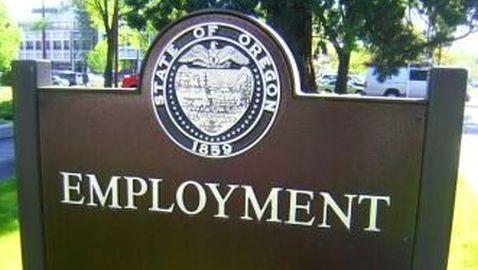Today, Justice Stevens continued his not-quite-so-busy speaking schedule with an address at Washington University in St. Louis, titled “Some thoughts about a former colleague.” The bulk of the speech is dedicated to Stevens and Scalia’s agreement with respect to Booker and Apprendi, and their disagreement on the 8th Amendment and redistricting. But, as has become his habit, Stevens decides to retread old ground, and revisit Heller. He notes that one of his major disagreements with Nino was about “the role of original intent in interpreting the Second Amendment.”
JPS has been keeping up on his reading, and completed “a few days ago,” The Quartet by Joseph Ellis. Starting on p. 21, Stevens quotes a few paragraphs, verbatim, from the final chapter of Ellis’s book. Ellis closes with this sentence:
The recent Supreme Court decision (Heller v. District of Columbia, 2008) that found the right to bear arms an inherent and nearly unlimited right is clearly at odds with Madison’s original intents.”
I read “The Quartet” last year, and winced when I read this sentence. Let’s count the mistakes from the otherwise careful-historian. First, it was District of Columbia v. Heller, not the other way around. Second, Heller did not guarantee an “nearly unlimited right.” Not even close. Third, Justice Scalia’s majority opinion was not premised on the Framer’s original intent, but on the doctrine of original public meaning originalism. It was Justice Stevens’s dissent that sought to apply the long-discredited doctrine of original-intentions.
In Heller, Justice Scalia’s majority opinion demonstrated that the original understanding of the Second Amendment protects an individual right to keep and bear arms, totally apart from militia service. Justice Stevens in dissent did not offer a living-constitutionalist response, arguing that guns do not fit with present-day circumstances. Instead, he ventured on his own originalist journey, trying to demonstrate that the right was tied to militia service. But where he faltered was applying the then-long-discredited original intent strand of originalism. He was about three decades behind the jurisprudential curve. This approach was canonized in an influential speech given by Attorney General Edwin Meese to the American Bar Association, calling for a restoration of a “jurisprudence of original intention.” Over the next decade, however, under the leadership and vision of Justice Antonin Scalia, the jurisprudential movement shifted to ascertaining the original public meaning of terms, rather than the framers purposivist intent. This is a movement that Justice Stevens apparently missed.
Randy Barnett explained Stevens’s miscue in a 2008 WSJ editorial:
Justice Scalia’s opinion is the finest example of what is now called ‘original public meaning’ jurisprudence ever adopted by the Supreme Court. This approach stands in sharp contrast to Justice John Paul Stevens’s dissenting opinion that largely focused on ‘original intent’; the method that many historians employ to explain away the text of the Second Amendment by placing its words in what they call a ‘larger context.’ Although original-intent jurisprudence was discredited years ago among constitutional law professors, that has not stopped nonoriginalists from using ‘original intent’ or the original principles ‘underlying’ the text to negate its original public meaning.
I made a similar point in a paper I authored for Prof. Joyce Malcom’s class on common law-rights in 2008.
“Rather than ascertaining the original public meaning, [Justice Stevens] focuses almost exclusively on the drafting history, and improperly attempts to guess the intentions of our framers.”
Even with Justice Scalia no longer able to respond, Stevens is still making the same mistakes.
There is a very surreal quality to what I have dubbed Justice Stevens’s rehab tour. In over two-dozen speeches given since his retirement, he continually tells any audience who will listen that he was right and Justice Scalia was wrong. I cannot find any similar example of such behavior from a retired Justice, and always found it bizarre. But now, even with Justice Scalia in the great beyond, Justice Stevens still feels compelled to explain why Nino was wrong.
Update: Tony Mauro discussed the speech, and quoted me, in the National Law Journal:
On the Second Amendment, Stevens said he and Scalia disagreed on “critical points.”
One was whether the framers understood the amendment to protect a right of civilians to use firearms, or the right of states to maintain a militia. In the 2008 case District of Columbia v. Heller, Scalia staked out the first position for the majority, and Stevens embraced the second in dissent.
Defending his point of view on Monday, Stevens quoted from The Quartet, a 2015 book by historian Joseph Ellis about the role of George Washington, Alexander Hamilton, John Jay and James Madison in creating the nation.
Ellis concluded that the Second Amendment was intended to promote state militias, not an individual right. The Heller decision, Ellis wrote, is “clearly at odds with Madison’s original intentions.”
Stevens said he and Scalia also diverged on the broader question of “whether originalism should provide the sole means of interpreting the Constitution.” On that point, Stevens quoted Ellis as saying the leaders of the American Revolution believed that future generations should not regard the words of the Constitution as “sacred script.”
Supreme Court scholar and blogger Josh Blackman wrote in a post Monday that Stevens has criticized Scalia’s position in Heller in more than two dozen speeches since retiring.
“He continually tells any audience who will listen that he was right and Justice Scalia was wrong,”Blackman wrote. “I cannot find any similar example of such behavior from a retired justice, and always found it bizarre. But now, even with Justice Scalia in the great beyond, Justice Stevens still feels compelled to explain why Nino was wrong.”

